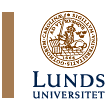

|
Panel No. 4Panel Title: The voice of Dalit in South Asian LiteratureConvenor: Aswini Mishra, Utkal University, Bhubaneswar, India. Friday 9 July, 8–128 Panel Abstract: Manusmriti, the first
document on jurisprudence in India strictly prohibits S.Cs (dalits)
from going through Vedas or even listening to its recitation. The
temples never welcome their steps. In spite of growing awareness
of the constitutional provisions (art 15 of Indian Constitution)
regarding bar on discretion basing on caste, religion, sex, race
and place of birth, the Indian scenario is never in its full proof
show so far to wipe out its stigma successfully from the society.
It is a blatant violation of article 15 (2b) of the constitution
which implies that caste shouldn’t serve as a plea for restricting
entry to places of public resort dedicated to the cause of general
public.
Another poet cries out ”in our nostrils, the smell of food. In our stomachs, darkness. from our eyes, welling up, streams of tears”. The struggle for human rights in South Asia may be either on economic political. or social fronts. Such exploited groups are there in Bangladesh, Sri Lanka, Pakistan, Afghanistan and other places of this continent. In the past few years among the literary achievements of Asia, there has been rousing awareness of the emergence and assertion of the voice of S.Cs in Asian poetry. A continuing dialogue reflecting the progressive vision of Asian poetics may form the subject matter of discussion. The dalit writers have now become familiar with the Black literary movement in U.S.A, the voice of universal justice in the poems of leading poets in Africa, South America and other places of the world. The critics very often say ”thus society has become a vast congregation of mutually praising and mutually honouring members. Flatterers and sycophants have become entrenched in seats of Authority”. They searched deep for words powerful enough to shock and awaken the slumbering multitudes which out of selfish motives entered into a compromise with the vested interests. Extended panel abstract (by AK Mishra) to be downloaded (as a pdf-file)
Papers accepted for presentation in the panel:Paper Giver 1: Heinz Werner Wessler, University of Bonn, Germany Paper 1 Title: A Mlecch
Perspective on Contemporary Hindi Dalit Literature
Academic scholars started to perceive the riches of classical Sanskrit and its literature and the relation between India and Europe through this language and the culture it once incorporated. The image of the untouchable as a backward, and at the same time an illiterate or at least less educated person, as somebody ascribed to and stubbornly absorbed by a subaltern manual occupation, perceived as his traditional and original profession according to some kind of dharma, is still dominating. Paper Giver 2: Sarah Bethuf, Cambridge University, UK Paper 2 Title: Dalit Autobiographies in Hindi: the transformation of pain into resistance Paper Abstract: Dalit literary assertion in Hindi has been of recent origin when compared to the origin of Dalit literature in Maharashtra. However, since the early 1980s, Dalit literature, including autobiographies, short-stories, intellectual debates, literary criticism, and popular booklets, have been expanding with impressive momentum in the Hindi belt. This paper seeks to look more closely at one of the most important forms of Hindi Dalit literature ˆ Dalit autobiography. It first asks, what is the meaning of autobiography in Dalit literature ? How do Dalit autobiographies differ from other autobiographies, and how does the narrative agenda within the autobiography form an anti-caste narrative ? Secondly, this paper seeks to dissect threadbare Dalit autobiographies‚ engagement with identity politics in an attempt to understand the kind of Dalit identity asserted in these autobiographies as well as the boundaries of these identities. Lastly, this paper will show that Dalit autobiographies represent an attempt to assert a new form of socio-historical narrative ˆ regarding both Dalit socio-cultural traditions as well as the history of the larger Dalit assertion movement ˆ into the mainstream narrative of the nation. Full paper to be downloaded (as a pdf-file) Paper Giver 3: Usha Rani Bansal, Banaras Hindu University, India Paper 3 Title: – Paper Abstract: Indian social polity consists of four varanas (castes). In the hierarchy of varanas, dalits are the lowest in the ladder. Their condition was very deplorable and pathetic beyond imagination. In the 20th century when India was swept by renaissance and the new wave of awakening, the dalits also saw a new dawn. They became conscious of their shockingly bad and inhumane living conditions. A dalit from the state of Bihar in Northern India wrote a peom ŒAchut ki shikayat‚ (meaning complaint of an untouchable) in local dialect bhojpuri. It was published in 1914 A.D. in a leading magazine Saraswati. This poem is regarded as the first subaltern poem written by a subaltern himself. The poem not only gave a picturesque idea of the conditions of dalits but also reflects the socio-economic and political environment of the country. The focus of the paper shall be to examine the conditions of the subalterns in India in the light of the poem written by Hira Dome. Paper Giver 4: Jugal
Kishore Mishra, Post-Doctoral scholar and Reader in political
science Paper 4 Title: A Critical study of Dalit Literature in India Paper Abstract : Dalit (oppressed or broken) is
not a new word. Apparently, it was used in the 1930s as a Hindi
and Marathi translation of depressed classes‚ a term the British
used for what are now called the Scheduled Castes. In 1070s the
ŒDalit Panthers‚ revived the term and expanded its reference
to include scheduled tribes, poor peasants, women and all those
being exploited politically, economically.
In modern times, because of the legacy of Mahatma Phule and Babarao
Ambedkar, Dalit literature got impetus in Maharastra.; But before
the name came into being in the 1960s, such people as Baburao Bagul,
Bandhu Madhav, Shankarao kharat were already creating Dalit literature.
These Dalit youths found inspiration in the movement of blacks in
the distant land of North America; their black literature and Black
Panther became the role models of sorts for them.
Full paper to be downloaded (as a pdf-file)
SASNET - Swedish South Asian Studies Network/Lund
University
|

